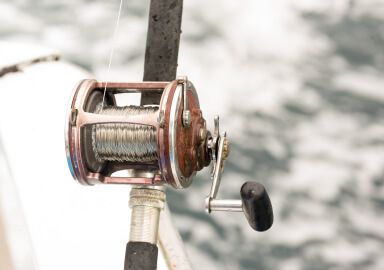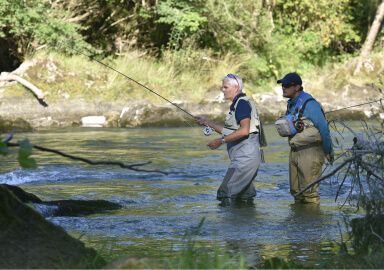Tiger Shark
Tiger sharks are large, fierce, top predators found in many temperate and tropical waters all over the world.
View 11 listings
11
listings
–
price starting from
5
countries
–
to the nearest trip
Where and When?
Tiger sharks are to be found in tropical and temperate waters from Japan in the north, to New Zealand, in the south, and are abundant around Australia, Hawaii and many other Pacific Ocean islands. In the Atlantic ocean they may be seen in the Gulf of Mexico, off the Florida shore and are common in parts of the Caribbean Sea.
Tiger sharks are mostly open water fish but enter harbours, bays and even river mouths on occasion. They patrol reefs and open water, usually alone, constantly in search of potential food. While they can enter very shallow water at night, they can also be found at depths of as much as 900 m. (3 000 ft.). There are no well-known large-scale migrations, but there are well-known areas of temporary abundance. Tiger sharks may be caught throughout the year, but, although they can be caught in daytime, most of their natural feeding is at night.
About Tiger Shark
The tiger shark, Galeocerdo cuvier, is the single surviving member of the ancient Galeocerdonidae shark family. It is second only to the great white shark in terms of numbers of fatal shark attacks on humans and, as its numbers have been depleted in many areas due to “shark finning,” it is now protected in some areas. The larger females attain 5 m. (16 ft. 5 in.) and over 900 kg. (2 000 lbs.). One female specimen, caught near Australia, measured 5.5 m. (18 ft. 1 in.) with a mass of 1 524 kg. ( 3 360 lbs.).
Tiger sharks are blueish grey above, often with a series of darker stripes down the flanks that fade with age. The large mouth is below the front of the head and is armed with many calcified, serrated, sharp, cutting teeth. The eyes are fairly large and the body is robust with an elongated tail. Tiger sharks have been called the “garbage bins” of the ocean as they often engulf inedible objects. They feed on a wide variety of items including birds, turtles, dolphins, seals, squid and many fish species. They mature at about 2.5-3 m. (8.2-9.7ft.) and females mate every three years giving birth to between 10 and 80 pups after 16 months gestation. They can live for at least 12 years.
How to Catch?
Heavy tackle is essential to catch adult tiger sharks. Most recreational tiger shark fishing is carried out from small boats in coastal waters while beach and shore fishing is popular in areas off Australia and south and east South Africa. Tiger sharks are protected in some waters, including those off Florida, and if any are caught here, they should immediately be released. The best baits for shore fishing are live fish and chunks of fish or squid. Expert anglers may catch them on the fly but this is rare.
Fishing from boats, strong spinning rods are best, using the same baits as from the shore, but artificial lures and trolling can also be successful where there are good numbers of tiger sharks. Due to its nocturnal feeding habits, shore fishing is most rewarding after dark, while night boat fishing is not very common in most areas. In areas where it is legal, tiger sharks can be a priority species due to their, potentially, immense size and fighting ability. With these fish, however, it is best to handle them as carefully and as safely as possible so that released fish have not been injured and can survive the impacts of capture. There are several good outfitters around the Florida and Gulf coast who can assist with shark fishing.
Listing Types
Similar Species
 Blacktip Shark
22 offers
Blacktip Shark
22 offers
 Blue Shark
6 offers
Blue Shark
6 offers
 Bonnethead Shark
7 offers
Bonnethead Shark
7 offers
 Bull Shark
13 offers
Bull Shark
13 offers
 Great White Shark
1 offer
Great White Shark
1 offer
 Greenland Shark
1 offer
Greenland Shark
1 offer
 Hammerhead Shark
9 offers
Hammerhead Shark
9 offers
 Lemon Shark
4 offers
Lemon Shark
4 offers
 Leopard Shark
1 offer
Leopard Shark
1 offer
 Mako Shark
28 offers
Mako Shark
28 offers
 Porbeagle Shark
3 offers
Porbeagle Shark
3 offers
 Shark
128 offers
Shark
128 offers
 Thresher Shark
4 offers
Thresher Shark
4 offers
 Tope Shark
2 offers
Tope Shark
2 offers







